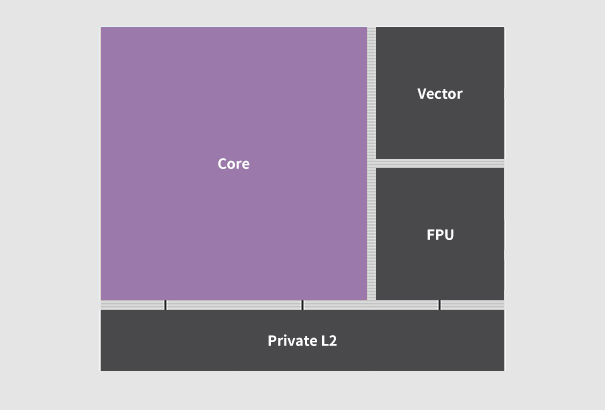StarFive has just announced customers’ delivery of the 64-bit RISC-V Dubhe core based on RV64GC ISA plus bit manipulation, user-level interrupts, as well as the latest Vector 1.0 (V) and Hypervisor (H) instructions.
StarFive Dubhe can be clocked up to 2 GHz on a 12nm TSMC process node, and the company also released performance numbers with a SPECint2006 score of 8.9/GHz, a Dhrystone score of 6.6 DMIPS/MHz, and a CoreMark score of 7.6/MHz. A third-party source told CNX Software it should be equivalent to the SiFive Performance P550 RISC-V core announced last summer, itself comparable to Cortex-A75.
StarFive Dubhe highlights:
- Typical frequency – 2.0 GHz @ TSMC 12nm
- “Industry-leading” Power and Area Efficiency (TSMC 12nm)
- RISC-V Vector Extension
- Data types: floating point, fixed point and integer
- VLEN=128-1024bits
- ALU & data path width=128 or 256 bits
- Full vector register grouping (LMUL) support
- RISC-V Virtualization Extension
- Pre-integrated Multi-Core with Memory Coherency Support
That’s not super detailed, but the company also lists some target applications with edge & cloud data centers (e.g. BMC, enterprise & computational storage), 5G infrastructure and base station, wireless access points, V2X communication, as well as Artificial Intelligence (AI) and Machine Learning (ML) for autonomous vehicles, robots, computer vision, and more.
StarFive has licensing agreements with SiFive, while being free to license its own RISC-V cores like the Dubhe, and that’s why you’ll find Dubhe together with SiFive U-Series, S-Series, etc.. on StarFive CPU cores page. Besides CPU IP, StarFive also provides its own full SoCs like the SiFive U74 based StarFive JH7100 processor found in the VisionFive V1 board that has just launched. So I would not be surprised if we see a Dubhe single board computer by the end of 2022 or sometime in 2023.
Via LinuxGizmos

Jean-Luc started CNX Software in 2010 as a part-time endeavor, before quitting his job as a software engineering manager, and starting to write daily news, and reviews full time later in 2011.
Support CNX Software! Donate via cryptocurrencies, become a Patron on Patreon, or purchase goods on Amazon or Aliexpress





